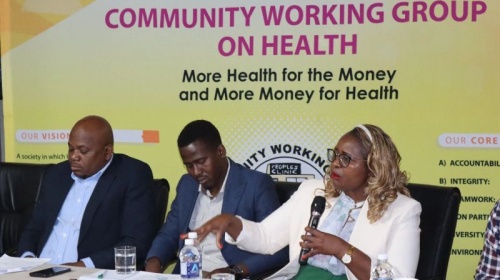By Gamuchirai Nyamuziwa | Oct. 31, 2025

The deficit is crippling the country’s ability to provide even the most fundamental services, the CWGH said.
ZIMBABWE’S public health system is facing a catastrophic shortage of nearly 58 000 skilled workers, a deficit so severe it requires the government to hire an average of 9 758 new staff annually until 2030 just to achieve basic health coverage, a new health sector position paper claimed this week.
The report by the Community Working Group on Health (CWGH), which lays out critical priorities for the 2026 National Health Budget, warned the current health worker establishment is out of line with the nation’s growing population and escalating disease burden.
The deficit is crippling the country’s ability to provide even the most fundamental services, the CWGH said.
It claimed as of 2023, Zimbabwe’s health workforce stock stood at just 47,5% of the national need, representing a “need based shortage of 57 543 health workers”.
This chasm between the required and actual staff levels has extensive implications on health outcomes, pushing the system to the brink of collapse, analysts also warned.
The report underscored the urgency for a resilient and motivated health workforce, a goal that remains elusive under current conditions.
“Therefore, it is essential to ensure availability of a resilient, motivated, and fit-for purpose health workforce,” the paper asserted, directly linking the staffing crisis to Zimbabwe’s inability to deliver on its universal health commitments.
To bridge this gap, the CWGH is making an unprecedented call for massive and immediate budgetary action.
“The government needs to demonstrate its commitment to expand MoHCC (Ministry of Health and Child Care) staff establishment by an average of 9 758 workers per year up to 2030 to meet the projected Health workforce need-based shortage,” the report stated.
This level of recruitment is deemed necessary to achieve 80% Universal Health Coverage and 99,1% disease burden coverage, targets that are foundational for the nation’s aspiration to become an Upper Middle-Income society by 2030.
The paper said termination of contracts for USAid-supported health workers had exacerbated the crisis, leaving critical gaps in health facilities and negatively impacting the quality of services.
The CWGH argued that the 2026 budget must not only fund new positions, but also absorb key roles previously supported by donor funds onto the government payroll to ensure sustainability and protect primary healthcare services for the most vulnerable. – Zimbabwe Independent.



